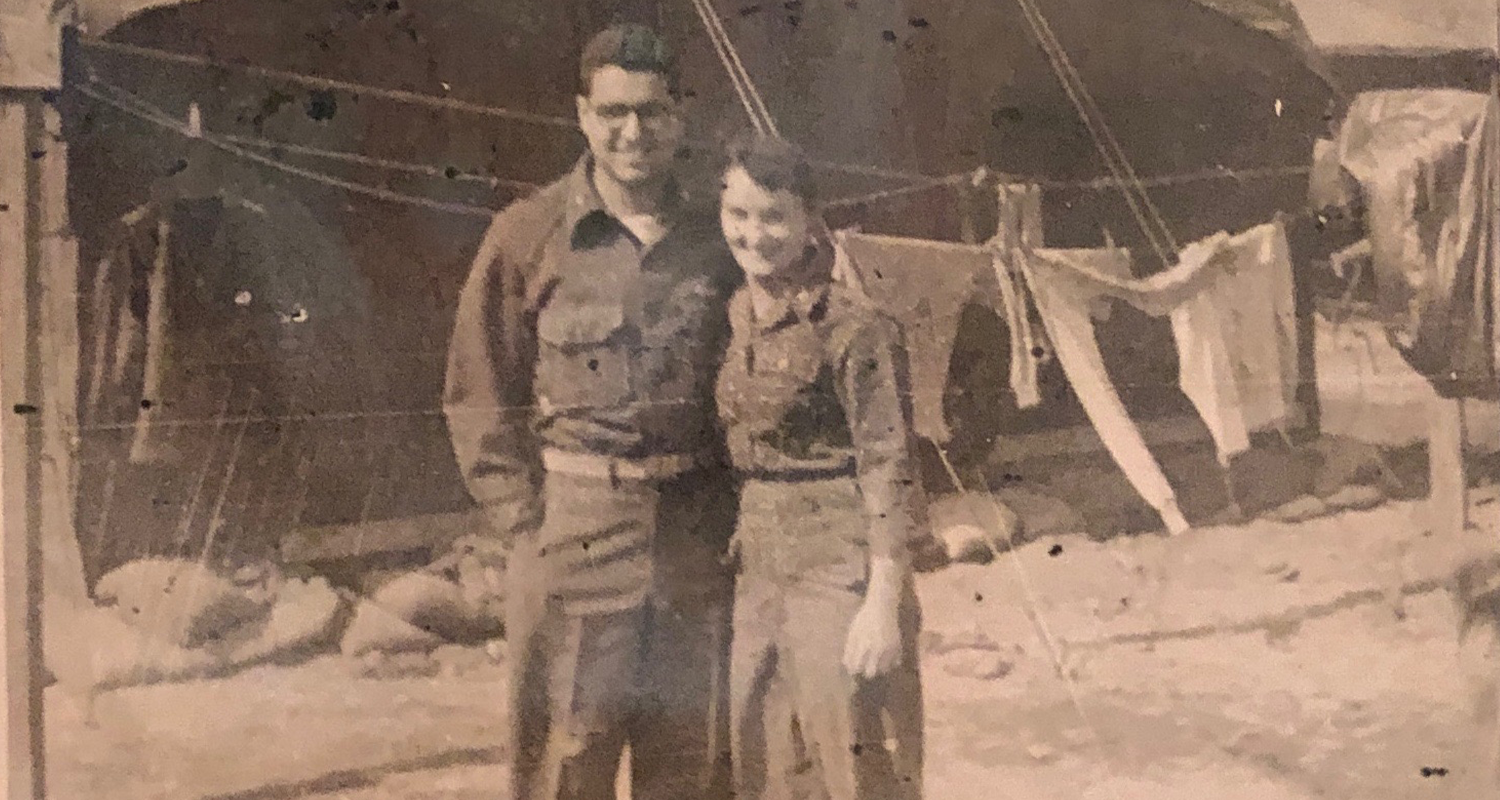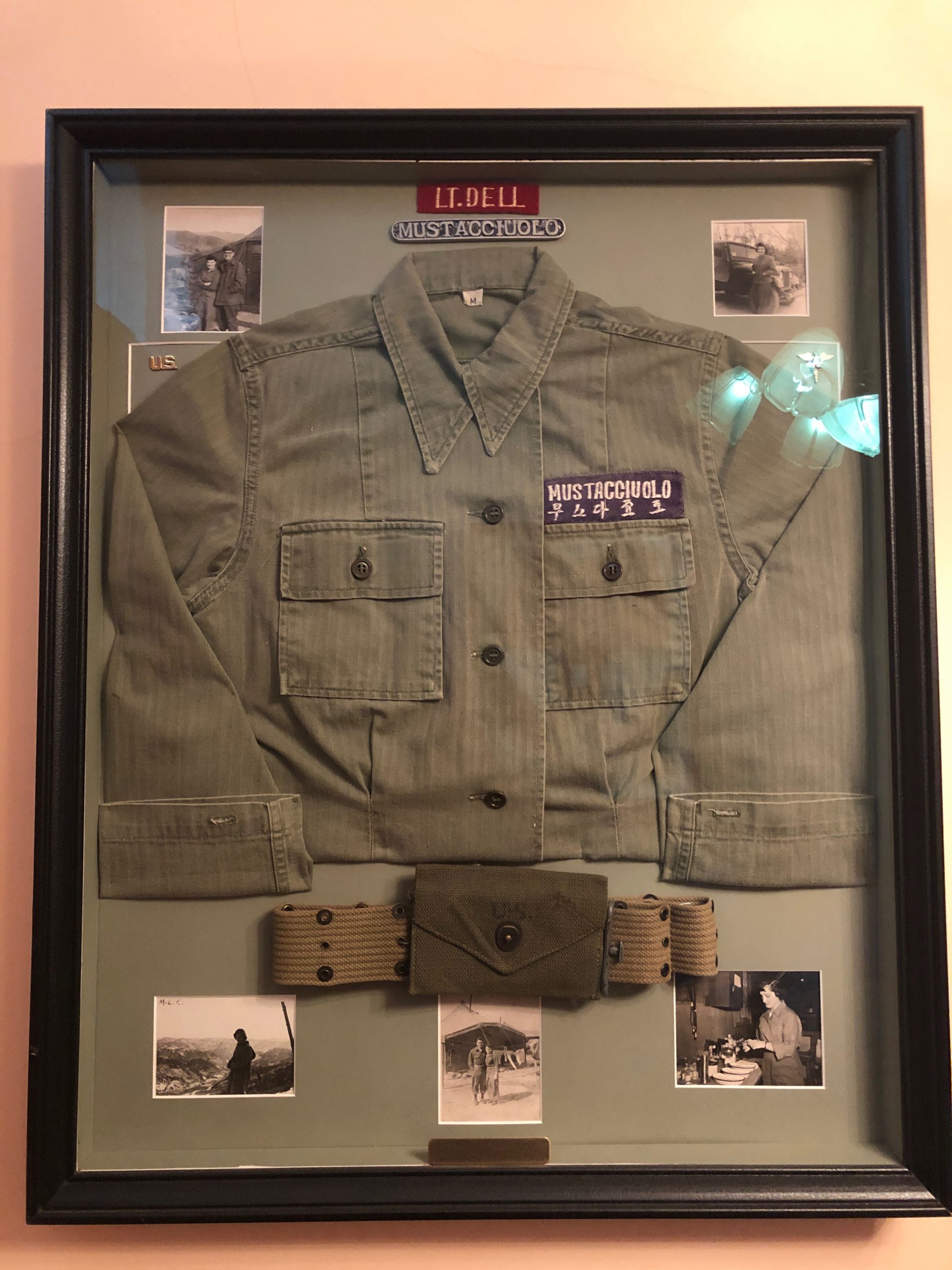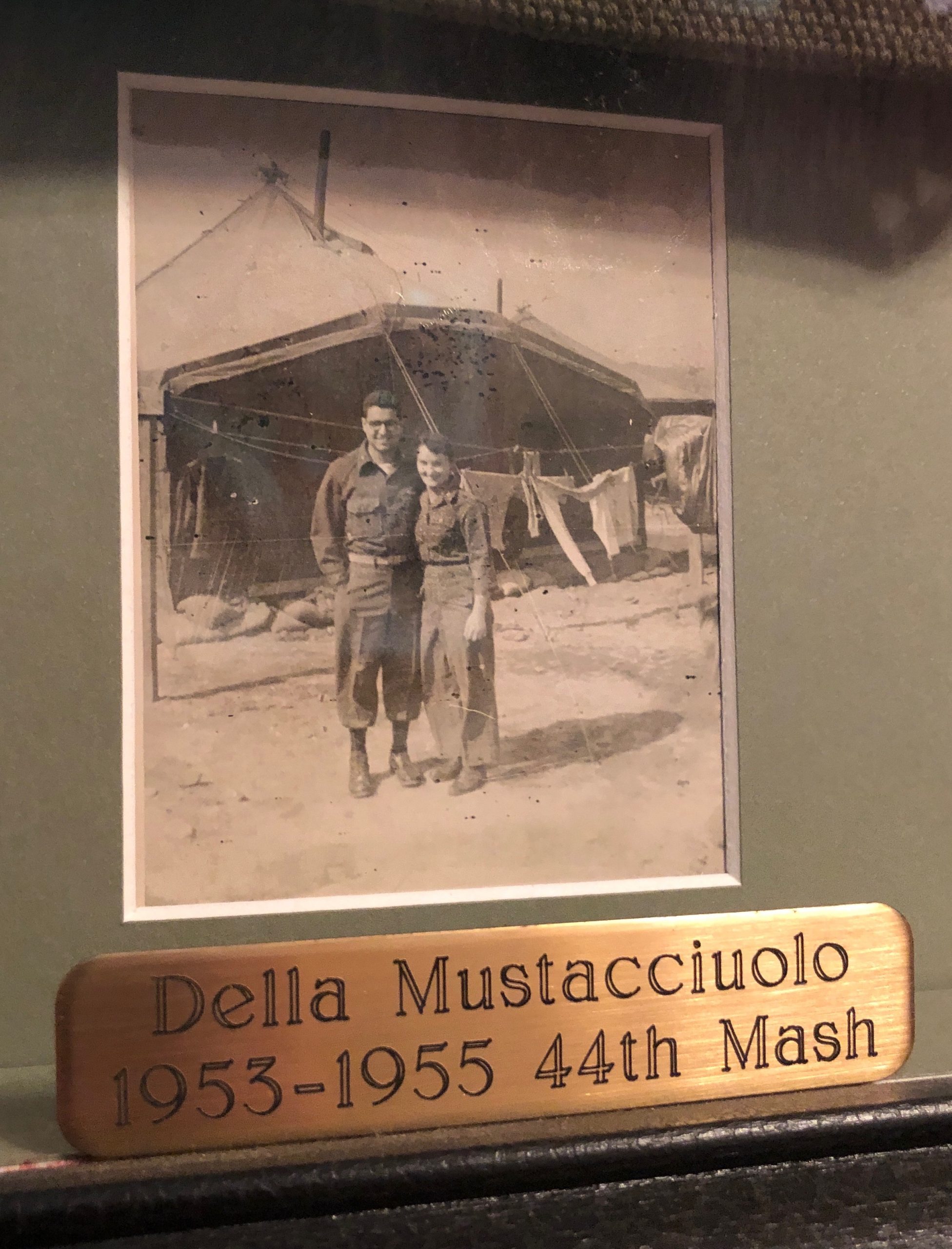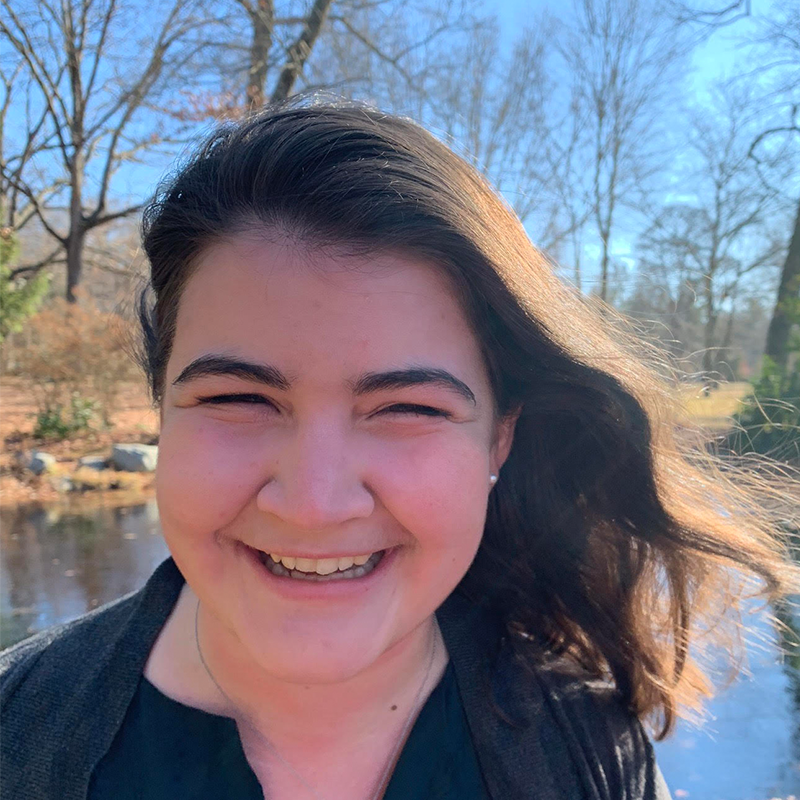While many people have undoubtedly watched the wildly popular 70s sitcom, M*A*S*H, most probably don’t realize that Wheeling has its own real-life MASH couple—Sam and Della Nazzaro. Sam Nazzaro and Domenica “Della” Mustacciuolo both served in the U.S. Army at the 44th MASH during the end and aftermath of the Korean War—Della as a nurse, Sam as an administrator.
Finding Love in Unusual Places
At the end of WWII in 1945, the Korean peninsula was divided between North Korea (backed by the communist Soviet Union) and South Korea (backed by the democratic U.S.). The Korean War became the first military conflict of the Cold War when the North Korean People’s Army invaded South Korea across the 38th parallel on June 25, 1950.1
Mobile army surgical hospitals, or “MASHs,” were moveable and followed the course of the fighting to be able to provide immediate medical care to wounded soldiers and civilians. MASH units were started in WWII but were greatly developed and utilized during the Korean War. The final MASH unit was phased out of commission as recently as 2006.2 During the Korean War, MASH units had the ability to have the whole camp “disassembled, loaded onto vehicles, and ready to depart with 6 hours notice. After arrival at its new destination, it was operational within 4 hours.”3 During the most destructive period of war, between 1950 and 1951, many of the “200-bed MASH units often treated over 400 patients a day.”4
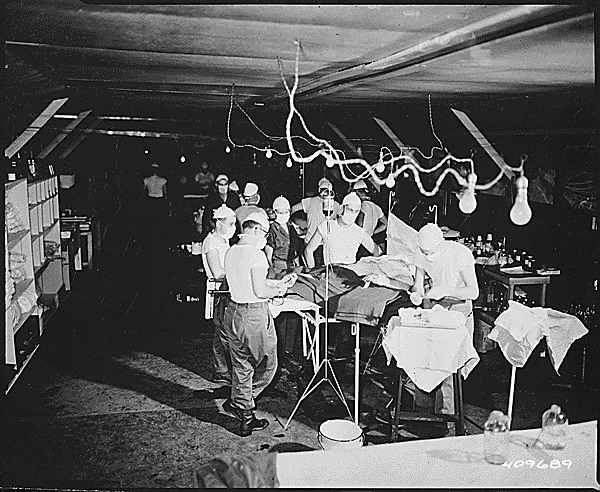
After graduating from the St. Francis School of Nursing in Jersey City, Della Mustacciuolo served at the Letterman Army Hospital in California, treating veterans returning from the Korean War. Della eventually volunteered to serve in Korea and she was stationed for 16 months as a First Lieutenant at the 44th MASH. In her role as a triage nurse, Della evaluated incoming casualties and prioritized patients for surgery.
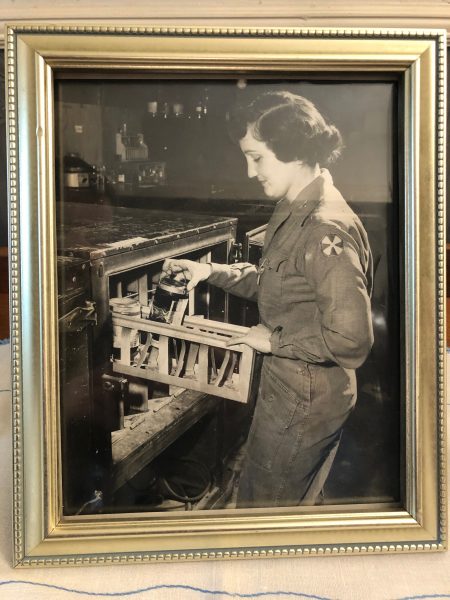
Sam Nazzaro, on the other hand, only arrived in Korea as the peace armistice was being signed. After receiving his master’s degree from St. Louis University in healthcare administration, he was drafted into the Army and offered an officer’s commission. Despite the war ending, Sam was still sent by train up to the 44th MASH, which was located 10 miles from the DMZ (Demilitarized Zone).
Sam hadn’t even arrived at the 44th MASH before Della’s colleagues were trying to set her up with the “young man from New Jersey.” According to Sam, “they connected very fast” and quickly became an item.
Sam and Della served at the 44th MASH, which had formerly been known as the 8063rd MASH. Even though the peace armistice was signed in July 1953, there were still skirmishes and wounded in need of care at the MASH hospitals. However, in contrast to earlier in the war, the MASH units didn’t move locations as frequently as the war wrapped up. The 44th MASH was the first unit to use helicopters to evacuate the wounded. 5
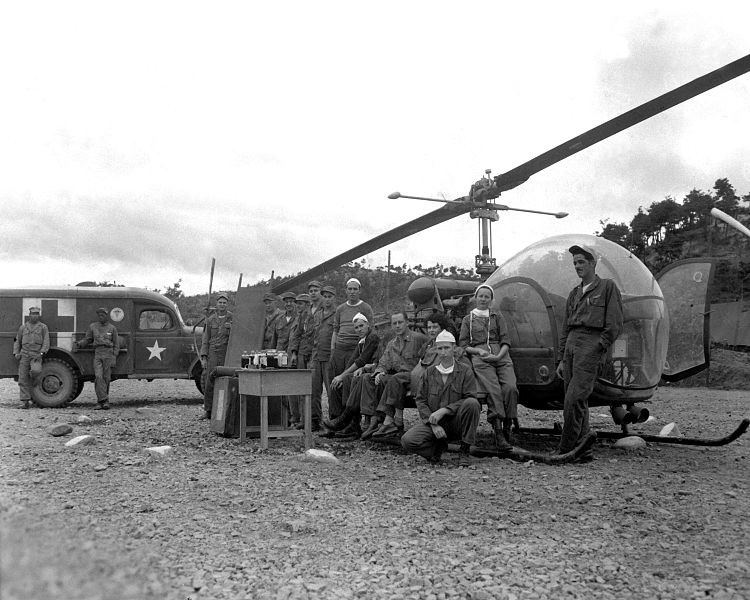
Their daily life in a war-zone centered around the MASH compound, with the women’s tents on one side and the men’s tents on the other. Della took a special interest in the Korean orphanages and in their downtime, she and Sam would visit the children. When they had more time, they sometimes got time off for some “R&R” (rest and relaxation) in Seoul or even Japan.
Nine months after Sam arrived at the 44th MASH, Della was scheduled to be shipped back to the States. Before she left, they went to Japan, bought a ring, and got engaged—even though Sam would remain in Korea for another six months.
The Korean War ended in a stalemate, with the border dividing North and South Korea essentially remaining very close to where it started at the 38th parallel. However, over the course of three years, approximately 5 million people, including combatants and civilians, were killed.6 North Korea and South Korea are still divided to this day.
Landing in Wheeling
After returning to the States, Della went to work at Fort Dix in Trenton, New Jersey while Sam finished his remaining six months of duty in Boston. One of Sam’s former professors pointed him towards a new hospital administrator position at Wheeling Hospital. Sam and Della got married, moved into a little house in Warwood that they rented for $75 a month, and the rest is history.
Over the course of their 65 years of marriage, Sam and Della lived in Warwood and Edgwood, before finally settling in Woodsdale. While raising their four children, Della remained very active in veterans’ associations and volunteered with the Red Cross, however, she would rarely talk about her time in Korea. While Sam and Della discussed returning to visit South Korea, they never got the chance. After complications due to two strokes, Della died in April 2020, surrounded by the large family she and Sam had cultivated—originating in the unlikely place of the 44th MASH in Korea.
Special thanks to Sam Nazzaro for taking the time to share his and Della’s story.
• Emma Wiley, originally from Falls Church, Virginia, was a former AmeriCorps member with Wheeling Heritage. Emma has a B.A. in history from Vassar College and is passionate about connecting communities, history, and social justice.
References
1 “Korean War,” History.com, accessed May 11, 2021, https://www.history.com/topics/korea/korean-war.
2 “Short History of Military Nursing: Resources for Korean War Nursing,” Ebling Library: University of Wisconsin Madison Health Sciences, accessed May 7, 2021, https://researchguides.library.wisc.edu/c.php?g=860714&p=6167916.
3 Scott C. Woodard, “The Story of the Mobile Army Surgical Hospital,” Military Medicine 168, no. 7, (2003): 508.
4 Booker King and Ismail Jatoi, “The Mobile Army Surgical Hospital (MASH): A Military and Surgical Legacy,” Journal of the National Medical Association 97, no. 5, (May 2005): 652.
5 Ibid., 650.
6 “Korean War,” History.com, accessed May 11, 2021, https://www.history.com/topics/korea/korean-war.


